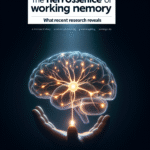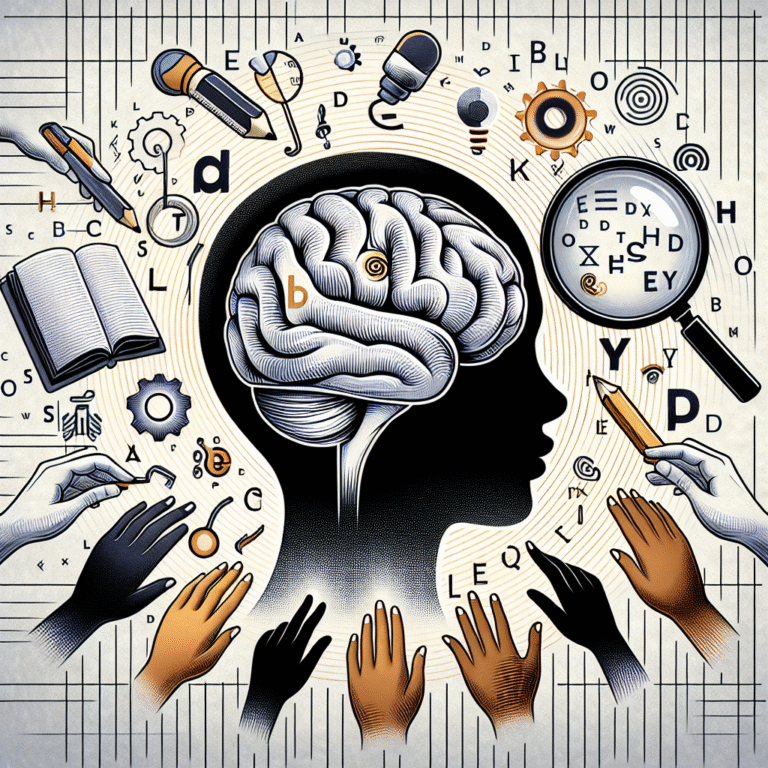
Navigating Learning Differences: Essential Tools for Educators and Parents
Introduction
Navigating the complexities of learning differences in today’s educational landscape is no small feat. Every child is unique, with distinct strengths and challenges that shape their learning journey. For educators and parents alike, understanding how to support these diverse needs is not just important—it’s essential. This article delves into Navigating Learning Differences: Essential Tools for Educators and Parents, offering pragmatic strategies, relatable case studies, and insights that empower both educators and parents to foster an inclusive learning environment.
In our increasingly diverse classrooms, it’s crucial to embrace the variety of learning styles, and strengths, and potential barriers that students may encounter. With the right tools and approaches, educators and parents can help unlock each child’s potential, ensuring they thrive academically, socially, and emotionally.
Understanding Learning Differences
Before diving into essential tools, it’s important to understand what we mean by learning differences. This term encompasses a range of conditions, including dyslexia, ADHD, autism spectrum disorders, and other neurodiversity variations that impact how a child learns. Recognizing these differences is the first step in Navigating Learning Differences: Essential Tools for Educators and Parents.
Types of Learning Differences
- Dyslexia: A language-based learning disability that affects reading fluency and comprehension.
- ADHD: Attention Deficit Hyperactivity Disorder can impede attention, organizational skills, and impulse control.
- Autism Spectrum Disorder (ASD): A developmental disorder affecting communication and social interaction.
- Dyscalculia: A learning difficulty centered on mathematics and number comprehension.
The Importance of Early Identification
Timely identification of learning differences is crucial. Research shows that early intervention improves the teaching strategies employed and the outcomes for children. Educators and parents who work collaboratively can help mitigate the challenges associated with learning differences, promoting a more equitable educational experience.
Essential Tools for Educators
To effectively navigate learning differences, educators need a repertoire of tools and strategies. Here are some essential tools that can make a significant impact:
1. Differentiated Instruction
Differentiated instruction involves tailoring teaching methods to accommodate varied learning styles and abilities. This approach recognizes that students learn differently and emphasizes flexibility in teaching strategies.
Case Study: The Mindful Classroom
In a fifth-grade classroom, Ms. Johnson implemented differentiated instruction by providing students with various learning activities—visual aids for visual learners, hands-on activities for kinesthetic learners, and reading groups for auditory learners. As a result, all students, including those with learning differences, demonstrated significant improvement in their overall performance.
2. Assistive Technology
Integrating assistive technology can drastically enhance the learning experience for students with learning differences. Tools like text-to-speech software, audiobooks, and interactive learning apps cater to different learning needs.
| Assistive Technology | Purpose |
|---|---|
| Text-to-Speech | Supports reading by converting text to audio |
| Speech Recognition | Aids in writing by converting speech to text |
| Interactive Apps | Engages students with fun, educational content |
3. Collaborative Learning
Collaboration fosters a sense of community and can enhance learning for all students. Encouraging group work and peer tutoring can help students with learning differences engage with their peers and benefit from diverse perspectives.
4. Clear and Consistent Communication
For students with communication-related learning differences, clear communication is key. This can include using visual schedules, clear instructions, and consistent language throughout lessons.
Case Study: Visual Solutions
In his special education class, Mr. Lee utilized visual schedules to help his students, many of whom had ASD. By incorporating visual elements into his classroom management, he noted a significant decrease in anxiety and an increase in self-regulation among his students.
Essential Tools for Parents
Parents are instrumental in their children’s education and development. Here are several ways they can support learning differences at home.
1. Routine and Structure
Establishing a routine can provide a sense of stability for children with learning differences. Consistency in daily activities helps these children know what to expect, reducing anxiety and fostering independence.
2. Open Communication with Educators
Parents should maintain an open line of communication with educators. Regular meetings and check-ins can help parents stay informed about their child’s progress and engage collaboratively in their educational journey.
3. Targeted Resources and Activities
Utilizing targeted resources can provide additional support at home:
- Educational Apps: Numerous apps focus on reading, math, and organizational skills that can meet children’s specific learning needs.
- Games and Activities: Engaging children in fun, educational games can reinforce learning without the pressure of formal lessons.
4. Advocacy and Support Groups
Joining advocacy and support groups can provide parents with valuable resources, strategies, and a sense of community. Parents can share experiences, obtain information, and learn best practices in holistic support for their children.
Case Study: The Empowered Parent
A mother of a child with ADHD implemented structured evening routines and collaborated closely with teachers to develop individual strategies. This partnership not only improved her child’s concentration on homework but also fostered a positive relationship between home and school.
Navigating Common Challenges
As educators and parents work together to navigate learning differences, challenges may arise. Recognizing these challenges is crucial to overcoming them.
1. Misunderstanding Learning Differences
Some parents or educators may lack awareness regarding the different types of learning differences. Providing education on these topics can help break down stereotypes and foster understanding.
2. The Stigma of Learning Differences
Combatting stigma surrounding learning differences is essential for creating a positive environment. Educators and parents should work to cultivate acceptance and understanding among peers.
3. Lack of Resources
Often, schools may have limited resources and support for students with learning differences. Advocacy for increased funding and training can help improve resource availability.
Summary of Key Points
To conclude, Navigating Learning Differences: Essential Tools for Educators and Parents involves understanding diverse learning styles and implementing effective strategies. By embracing differentiated instruction, utilizing technology, fostering collaboration, and maintaining open communication between home and school, both parents and educators can play a pivotal role in students’ success.
Actionable Insights:
- Begin early: Identify students who may need support as soon as possible.
- Utilize technology: Embrace tools that cater to various learning needs.
- Collaborate: Foster strong relationships between parents and educators, ensuring seamless support.
- Advocate: Speak out for necessary resources and policies that support learning differences.
FAQs
1. What are some signs that a child may have a learning difference?
Signs can include difficulty reading, trouble following instructions, or challenges in maintaining attention. Consulting educators and specialists can offer additional insights.
2. How can I support my child with learning differences at home?
Supporting your child involves establishing routines, using educational resources, and maintaining open communication with teachers.
3. What role does technology play in supporting learning differences?
Technology can provide personalized learning experiences, enhance engagement, and offer alternative ways to access educational material.
4. Can learning differences change over time?
Yes, children can develop new skills and coping mechanisms over time; however, the fundamental differences they experience may continue to exist.
5. How can educators create an inclusive classroom environment?
Educators can create inclusive environments by implementing differentiated instruction, using assistive technology, and fostering a culture of acceptance and collaboration.
6. Are learning differences linked to intelligence?
Learning differences are not indicative of a person’s intelligence. Many students with learning differences are exceptionally intelligent but require different pathways to demonstrate their abilities.
Conclusion
Navigating learning differences is an evolving journey for both educators and parents. By embracing new tools, fostering collaboration, and advocating for understanding, we can create an environment where every child thrives. This journey is not just about overcoming challenges; it’s about unlocking potential and building futures filled with possibilities. Embrace this journey with an open heart and a determined spirit. Together, we can change lives and create inclusive communities—one child at a time.
















